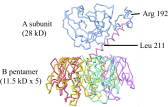Parenteral Vaccination Can Be an Effective Means of Inducing Protective Mucosal Responses
- PMID: 27122485
- PMCID: PMC4895008
- DOI: 10.1128/CVI.00214-16
Parenteral Vaccination Can Be an Effective Means of Inducing Protective Mucosal Responses
Abstract
The current paradigm in vaccine development is that nonreplicating vaccines delivered parenterally fail to induce immune responses in mucosal tissues. However, both clinical and experimental data have challenged this concept, and numerous studies have shown that induction of mucosal immune responses after parenteral vaccination is not a rare occurrence and might, in fact, significantly contribute to the protection against mucosal infections afforded by parenteral vaccines. While the mechanisms underlying this phenomenon are not well understood, the realization that parenteral vaccination can be an effective means of inducing protective mucosal responses is paradigm-shifting and has potential to transform the way vaccines are designed and delivered.
Copyright © 2016, American Society for Microbiology. All Rights Reserved.
Figures


References
-
- Ogra PL, Ogra SS. 1973. Local antibody response to poliovaccine in the human female genital tract. J Immunol 110:1307–1311. - PubMed
-
- Halperin BA, Morris A, Mackinnon-Cameron D, Mutch J, Langley JM, McNeil SA, Macdougall D, Halperin SA. 2011. Kinetics of the antibody response to tetanus-diphtheria-acellular pertussis vaccine in women of childbearing age and postpartum women. Clin Infect Dis 53:885–892. doi:10.1093/cid/cir538. - DOI - PubMed
MeSH terms
Substances
LinkOut - more resources
Full Text Sources
Other Literature Sources
Medical

